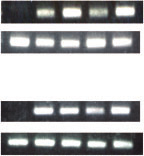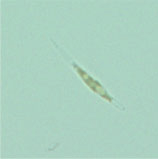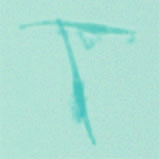Familynp4 vol2 1-2-14.pdf
Debra Shearer, EdD, MSN, FNP-BC ᮣ Sexually transmitted infections (STIs) are also known as sexually transmitted diseases. ᮣ 20 million new infections annually in the United Statesᮣ On January 18, 2013, the Food and Drug Administration (FDA) announced a shortage of doxycycline, which is recommended for chlamydia, nongonococcal urethritis, epididymitis, and pelvic inflammatory disease, a
 Biosci. Biotechnol. Biochem., 77 (4), 120936-1–3, 2013
Highly Efficient Transformation of the Diatom Phaeodactylum tricornutumby Multi-Pulse Electroporation
Mado MIYAHARA,1 Masaki AOI,1 Natsuko INOUE-KASHINO,2Yasuhiro K
1Graduate School of Biostudies, Kyoto University, Kyoto 606-8502, Japan2Graduate School and Faculty of Science, University of Hyogo, 3-2-1 Kohto, Ako-gun, Hyogo 678-1297, Japan
Received December 6, 2012; Accepted January 10, 2013; Online Publication, April 7, 2013
A highly efficient nuclear transformation method was
cultured in Daigo’s IMK culture medium (Nihon
established for the pennate diatom Phaeodactylum
Pharmaceutical, Osaka, Japan) supplemented with sea
tricornutum using an electroporation system that drives
salts (Sigma, St. Louis, MO) and 0.2 mM Na2SiO3.
Biosci. Biotechnol. Biochem., 77 (4), 120936-1–3, 2013
Highly Efficient Transformation of the Diatom Phaeodactylum tricornutumby Multi-Pulse Electroporation
Mado MIYAHARA,1 Masaki AOI,1 Natsuko INOUE-KASHINO,2Yasuhiro K
1Graduate School of Biostudies, Kyoto University, Kyoto 606-8502, Japan2Graduate School and Faculty of Science, University of Hyogo, 3-2-1 Kohto, Ako-gun, Hyogo 678-1297, Japan
Received December 6, 2012; Accepted January 10, 2013; Online Publication, April 7, 2013
A highly efficient nuclear transformation method was
cultured in Daigo’s IMK culture medium (Nihon
established for the pennate diatom Phaeodactylum
Pharmaceutical, Osaka, Japan) supplemented with sea
tricornutum using an electroporation system that drives
salts (Sigma, St. Louis, MO) and 0.2 mM Na2SiO3.



 Highly Efficient Transformation of a Diatom by Electroporation
staining in the cells containing uidA (Fig. 3D), confirm-
ing that expression of the reporter genes was maintained
stably during the repeated segregation process. Expres-
sion level of sgfp in each transgenic line was estimatedfrom the intensity of GFP fluorescence (Fig. 3E). GFP
fluorescence levels were different among the transgenic
cell lines and this was probably caused by differences in
copy number or the position of the reporter gene in thegenome.
Highly Efficient Transformation of a Diatom by Electroporation
staining in the cells containing uidA (Fig. 3D), confirm-
ing that expression of the reporter genes was maintained
stably during the repeated segregation process. Expres-
sion level of sgfp in each transgenic line was estimatedfrom the intensity of GFP fluorescence (Fig. 3E). GFP
fluorescence levels were different among the transgenic
cell lines and this was probably caused by differences in
copy number or the position of the reporter gene in thegenome.